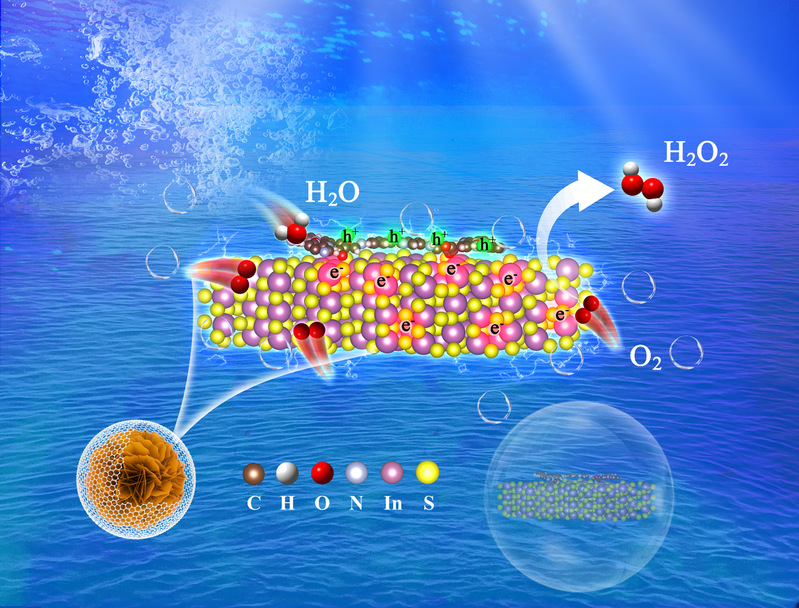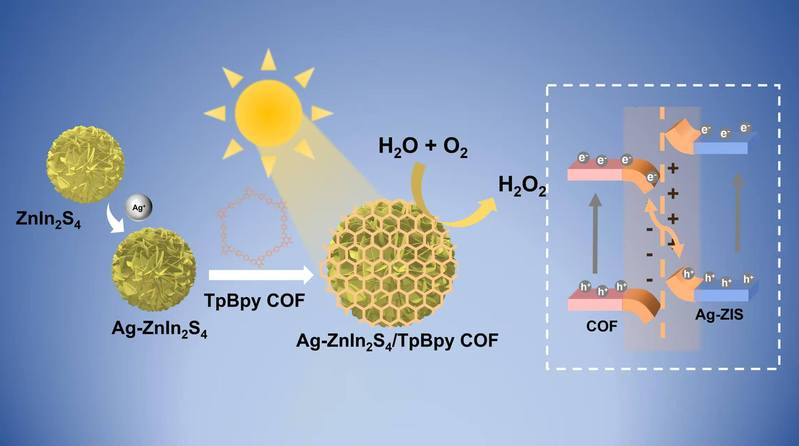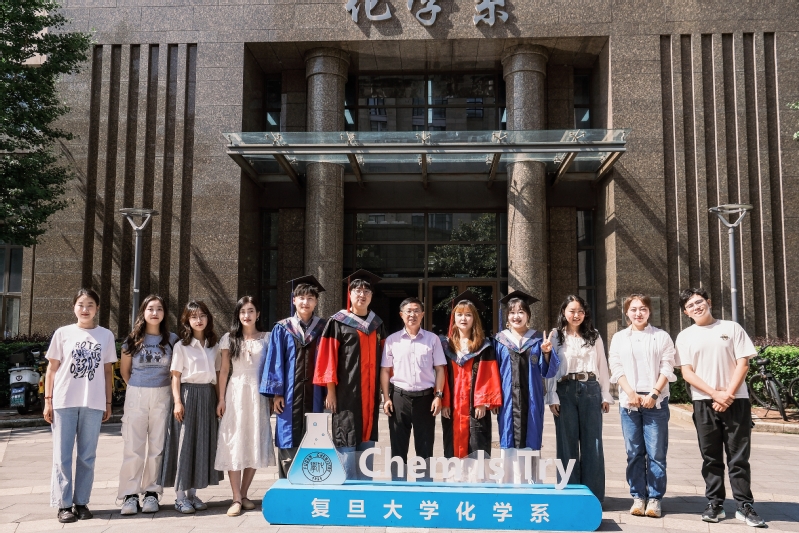Utilizing of oxygen and water for hydrogen peroxide (H2O2) production presents an attractive approach for solarto-chemical energy conversion. The rapid recombination of charge carriers generated by individual covalent organic frameworks (COFs) remains a major limitation in the field of H2O2 photoproduction. In this work, we developed binary heterojunction photocatalysts by facilely combining bipyridine-based COF (COF-TpBpy) with flower-like In2S3 nanosheets using an in-situ solvothermal method. The interface interaction within rationally designed catalysts, namely flower-like In2S3 nanosheets/COF-TpBpy (In2S3/TpBpy) heterostructures, has been experimentally confirmed to significantly enhance the charge transfer efficiency and solar-to-H2O2 conversion through ex-situ and in-situ light-irradiation X-ray photoelectron spectroscopy (XPS) measurements, photoelectrochemical tests and density functional theory (DFT) calculations. Benefiting from these robust interface interactions, the In2S3/TpBpy composite exhibited exceptional activity in generating H2O2 at a rate of 3581 μM⋅h- 1, surpassing the results of most of the reported semiconductor materials. It is surprising to find that this heterojunction also demonstrates excellent reusability and a faster generation but slower decomposition rate for H2O2. Through comprehensive characterizations, we successfully elucidated that reduction of O2 to H2O2 proceeds through 2e- processes. The synthesized photocatalyst In2S3/TpBpy validates the significance of interface interactions in enhancing charge transfer efficiency and promoting more effective solar-to-H2O2 conversion. Future investigations could focus on developing innovative yet cost-effective and scalable preparation methods suitable for practical applications, thus paving a path towards implementing sustainable energy technologies.
https://doi.org/10.1016/j.seppur.2024.130374
文章链接:https://doi.org/10.1016/j.seppur.2024.130374
附件:![]() 10.1016j.seppur.2024.130374.pdf
10.1016j.seppur.2024.130374.pdf
 Wei-Lin Dai Group
Wei-Lin Dai Group



